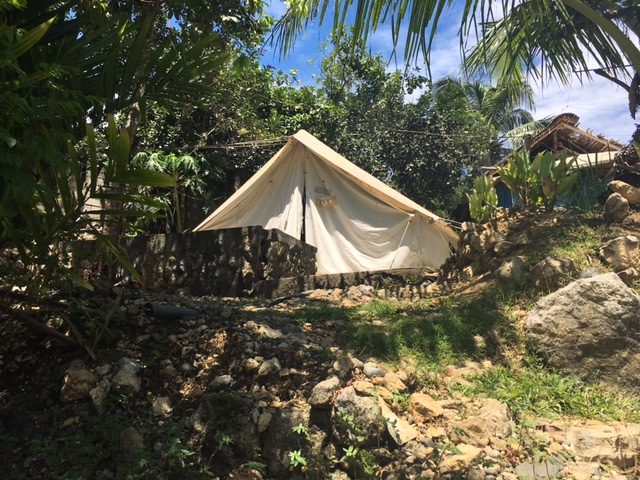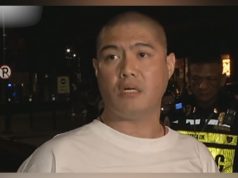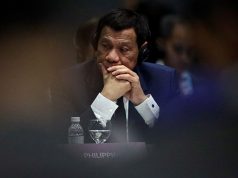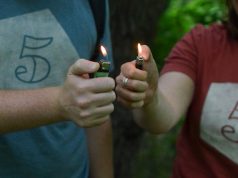
KIANGAN, Ifugao, Philippines – He comes from a low-income family, wears slippers most of the time and dons shorts partnered with a simple shirt as he walks around their community.
Felipe (not his real name) knew he fits the profile of a typical victim of Oplan Tokhang, the term for the deadly campaign on the war on drugs of the Duterte administration, especially because he is a drug addict.
“Siguro kung nasa Maynila ako, bilang na ang mga araw ko, o kaya patay na ako,” he said in an interview.
He first got hooked at 17. Now 42, he is among the first “graduates” of the drug rehabilitation program of the province.
In September 2016, three months into the President’s brutal anti-illegal drug campaign, the province established the Ifugao Reflection Camp (IRC), a half-way house that enables drug peddlers and users who have surrendered to local authorities to engage in community-based rehabilitation program.
The Department of Social Welfare and Development (DSWD) recently hailed the IRC as a model program and plans to replicate it in other places in the country to help drug dependents.
“The atmosphere in the IRC is very conducive to recovery because the (drug) surrenderers are treated with respect, and they are taught to see their own worth to their families and communities,” DSWD Assistant Secretary for Special Concerns Jose Antonio Hernandez had said.
Ifugao Representative Teddy Baguilat Jr. said the IRC “doesn’t treat the drug user as a criminal or a scourge, but as a citizen, who, just like all of us, sometimes go astray.”
“Thus, the primary purpose is rehabilitation and rebirth through various interventions,” he said.
Marijuana at 17, “meth” at 23
Felipe’s journey into the world of illegal drugs began at 14 when he was asked to deliver packs of marijuana. Ifugao then teemed with weed plantations and was a known source of mairjuana.
After a few “assignments,” Felipe proved to be a reliable courier and was given more weed to deliver, which he brought to as far as Metro Manila, an 8-10 hours’ drive from their town.
“Nasa bag lang ‘yung marijuana, pagdating sa Maynila, may taong sumasalo [The marijuana was just placed in a bag. Whenever I reached Manila, there’d be someone to meet me to get it],” he said.
At 17, because he could get the leaves cheap – if not for free – he was tempted to begin using them. Six years later, at 23, Felipe lost interest in the illegal weed and tried the crystal methamphetamine (shabu).
He said a friend brought a sachet of “meth” in his house and asked him to try it. He eventually got hooked to it and bought whenever he needs it.
Finishing only Grade 4, Felipe could only find a job as a truck driver. Twice a week, he would drive a 10-wheeler truck to Manila, pick up construction materials and bring them to provinces in the north. He was on the road for eight to 20 hours during trips, and this is when he would take shabu.
“Iyong supplier namin ang alam ko galing sa Caloocan. Dadalhan kami bago umalis sa Manila, tapos ite-take na amin iyong meth bago mag-byahe [I knew that our supplier was from Caloocan. He would deliver stuff to us before we leave Manila. We would then take it before taking the road back north],” he said.
He said he felt he could drive for days when high on drugs. When in the farm, he said he could finish planting in one day what was supposed to be a field work of four days, after taking shabu.
The downside of “meth”
Shabu was expensive. A sachet of the drug crystals cost Felipe P500. “Isang sachet kada isang byahe, konti lang ang laman nun. Kung bubuuin mo iyong crystals, siguro mga tatlong butil lang ng munggo [we could only afford one sachet per trip, because the sachet contained so little. If you were to put together those crystals, they’d probably amount to just three grains of mongo],” he said.
He was getting paid P1,500 per trip from Manila to Isabela or other provinces in the north. Less the cost of the drugs, he would take home only P1,000. He said he worked for the trucking company two times a week.
“Kung buo ang sweldo ko, P3,000 a week, kaya lang P1,000 nun sa meth na na napupunta [If I get my salary intact, it’s P3,000 a week, but P1,000 of that would go to meth],” he said.
Felipe is a father to three children. The first two are living with their mother in the United States. He lives in the town of Lagawe with his second wife and their child.
“Pag hindi ka nakakagamit, hindi maganda ang pakiramdam. Pero hindi naman ako ‘yung nananakit, o nakakisip ng masama sa ibang tao. Kaya lang, dahil kailangan ko ng pambili, halos lahat ng gamit naibenta ko [I don’t feel well when I don’t take it, though I’m not one to become violent or try to hurt people. It’s just that each time I needed money badly to buy meth, I’d end up selling lots of our things],” he said.
He sold personal items, as well as the tricycle given by his parents and a parcel of farm land owned by the family — all to have money for “meth.” When his wife asks him to buy groceries in the market, he would pocket some amount from the budget. Instead of buying 10 kilos of rice, he would only buy five. He would buy noodles or sardines instead of meat.
“Kung kukwentahin ko, siguro halos kalahating milyon ang naibenta ko at napunta lahat sa droga [If I were to sum it all up, I must have sold half a million pesos worth of things and the money all went to buy drugs],” he said.
This often caused disagreements with his wife and with his mother, who lives in Quezon City. “Nawala ang tiwala nila sa akin. Kahit iyong mga kapitbahay ko minsan hindi na ako kinakausap, natatakot na sa akin [They lost faith in me. Even my neighbors would often not talk to me; they were scared of me],” he said.
Felipe’s name had appeared on the police watch list of drug suspects drawn up with the help of barangay leaders in this town. But before the police could knock on his door, he turned himself in and underwent an intervention program.
In April, he was one of the 109 drug dependents who completed the drug rehabilitation program.
A day at the camp
Nestled at Tiger Hill in Baguinge in this town, the Ifugao Reflection Camp (IRC) occupies the enclosed compound of the old Ifugao Provincial Jail. Several white tent houses, each measuring around 3 meters x 3 meters, were erected to serve as sleeping quarters of the surrenderers.
Without a specific budget for the rehabilitation camp, the barangays, municipalities and the provincial government each provided counterpart funding or resources for the operation of the IRC, according to Joyce Niwane, the provincial social welfare and development officer.
A total of 603 drug dependents have surrendered since the start of Oplan Tokhang in July. The surrenderers underwent assessment to determine who needs to undergo rehabilitation at the IRC and those who only need counseling or similar intervention.

The camp provides five types of services: medical assistance; health and fitness therapy; counseling/psychosocial intervention; spiritual counseling; and life skills capability building and referral.
Those in the program undergo detoxification, through physical fitness exercises and dietary management; biomedical monitoring; behavioral intervention through personality development modules and spiritual counseling; cognitive behavioral therapy and family behavioral therapy; and extension services, through drug clearing operations training.
A typical day begins at 5 a.m. with physical exercises. Breakfast is usually fish and egg. They are served vegetables and fish for main meals. Meat is served only three times a week. Boiled banana, kamote and lemon grass tea are staples in the camp.
“We limit the sugar and salt intake. They can’t take coffee and moma (betel nut chewers). Doctors regularly check them, nurses are available 24 hours a day,” said Niwane.
The program lasts for six months. For several days in a month, the surrenderers return to be integrated in their community.
After graduation, they are still monitored and are required to report regularly to the social welfare officer.
The next phase of support focuses on livelihood and access to financing, Niwane said.
Hope for recovering addicts
Liezl Saldaan, IRC camp director, said change within the drug dependents does not happen overnight. “Napakahirap. Minsan nga may nagpupuslit pa rito ng moma, hinahagisan sila mula sa gilid ng bundok [It’s such a struggle. Sometimes someone wold even smuggle in moma here, and throw it to them from the mountainside],” she said.
Still, seeing the 109 “graduates” after six months gives her fulfillment. The graduates have organized themselves into smaller support groups, and often meet to update each other of their own progress.
Recently, Felipe said the Department of Labor and Employment also pledged to assist them to start their own business with loan support.
“Dito namin naintindihan kung paano irespeto ang sarili namin, kung paano maging tao uli [Here’s where we learned to respect ourselves again, to feel like human again],” he said.
Niwane said there should be a holistic approach to the drug menace; the body should not just be cleansed of the substance, there should also be a total rehabilitation of the person.
READ ALSO: DRUG WAR, A YEAR AFTER | More blood but no victory: experts, rights advocates
Rep. Baguilat said the Ifugao model is a clear example that the most ideal solution to the drug menace is initiated by the local government units, “guided by what is culturally accepted and effective.”
“The national government sets policy direction or provides assistance, but the response is best from the local,” he said.
In the IRC, he said the drug user is not treated with “scare tactics, shaming or vilification.”
“From the experience of our enrollees, other drug users will be emboldened to seek rehabilitation without fear of being “tokhangized” (killed) and without fear of being stigmatized,” he said.
“Surrendering really means more of an acceptance that the user needs compassion and professional help and he or she can get that from peers, professionals, social workers, doctors, law enforcers and more importantly the family and community,” Baguilat added.









